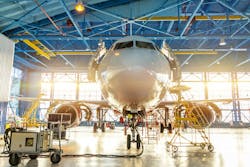What does the future hold for commercial-aviation maintenance?
NEW YORK - Commercial airlines learned how to cope with an unprecedented drop in passenger demand during the COVID-19 pandemic. Now, after three years of steady recovery, they are grappling with the opposite challenge: too few new aircraft to support growing travel demand, Daniel Leblanc writes for McKinsey & Company. Continue reading original article.
The Military & Aerospace Electronics take:
18 July 2024 - Management consultancy firm McKinsey & Company's Daniel Leblanc, Dacia Tarleton, and Tore Johnston dive into the future of maintenance, repair, and overhaul (MRO) services, which, they say, will be driven by airlines using larger fleets and flying further onboard aircraft with advanced technologies.
"Many deliveries will consist of aircraft with composite airframes or wings, as well as next-generation engines," the McKinsey analysts write. "The new GTF and LEAP engines in these aircraft are currently experiencing more frequent maintenance visits than their CFM56 and V2500 predecessors did because of technical and production quality issues that are common with innovation. But once OEMs resolve these issues, the newer engines are expected to be highly reliable and have comparable or even lower maintenance costs than their predecessors. They will also provide airlines with much improved fuel efficiency."
Related: Why digitizing aircraft maintenance records is a no-brainer
Related: Honeywell introduces AI software solution for commercial MRO
Related: Saudia Technic unveils mobile MRO base
Jamie Whitney, Senior Editor
Military + Aerospace Electronics
